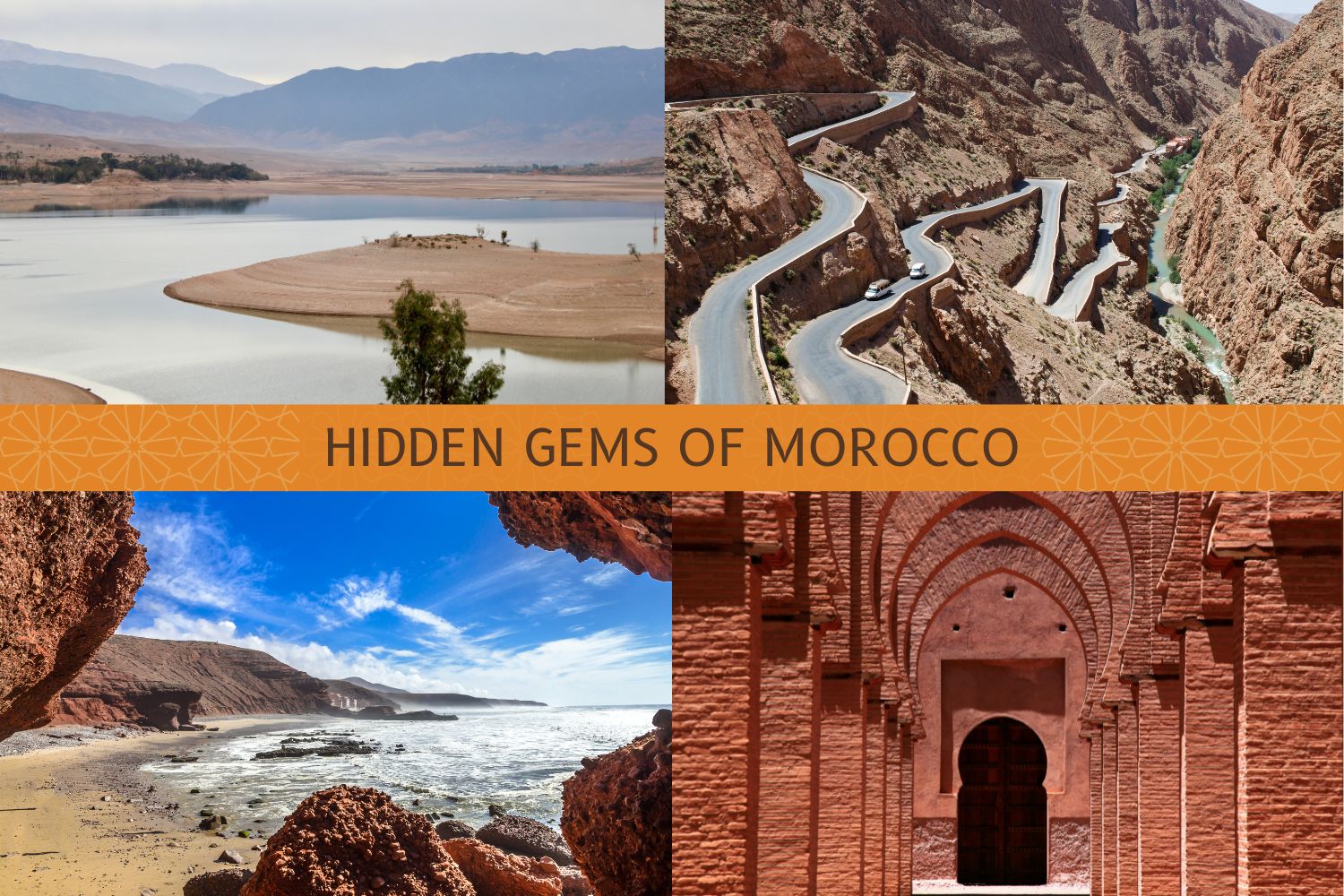
Hidden Gems of Morocco
It takes you to the majestic palaces to reveal the country’s less-traveled paths and hidden treasures. Here, we delve into the heart of Morocco’s hidden Gems – from tranquil lakes and majestic gorges to serene beaches and sacred towns, each destination unfolding its unique story.
Each region holds its unique charm and secrets, waiting to be discovered by those who tread off the beaten path. From secluded beaches along the Atlantic coast to the verdant valleys of the Atlas Mountains, this is your key to exploring the unseen and unforgettable parts of Morocco.
Whether you are an avid adventurer, a culture enthusiast, or simply a traveler seeking solace in uncharted corners, these hidden Gems promise experiences as diverse and enchanting as Morocco itself. So, pack your curiosity and let this guide lead you to the roads less traveled, to the heart of Morocco’s concealed splendors.
Lalla Takerkoust
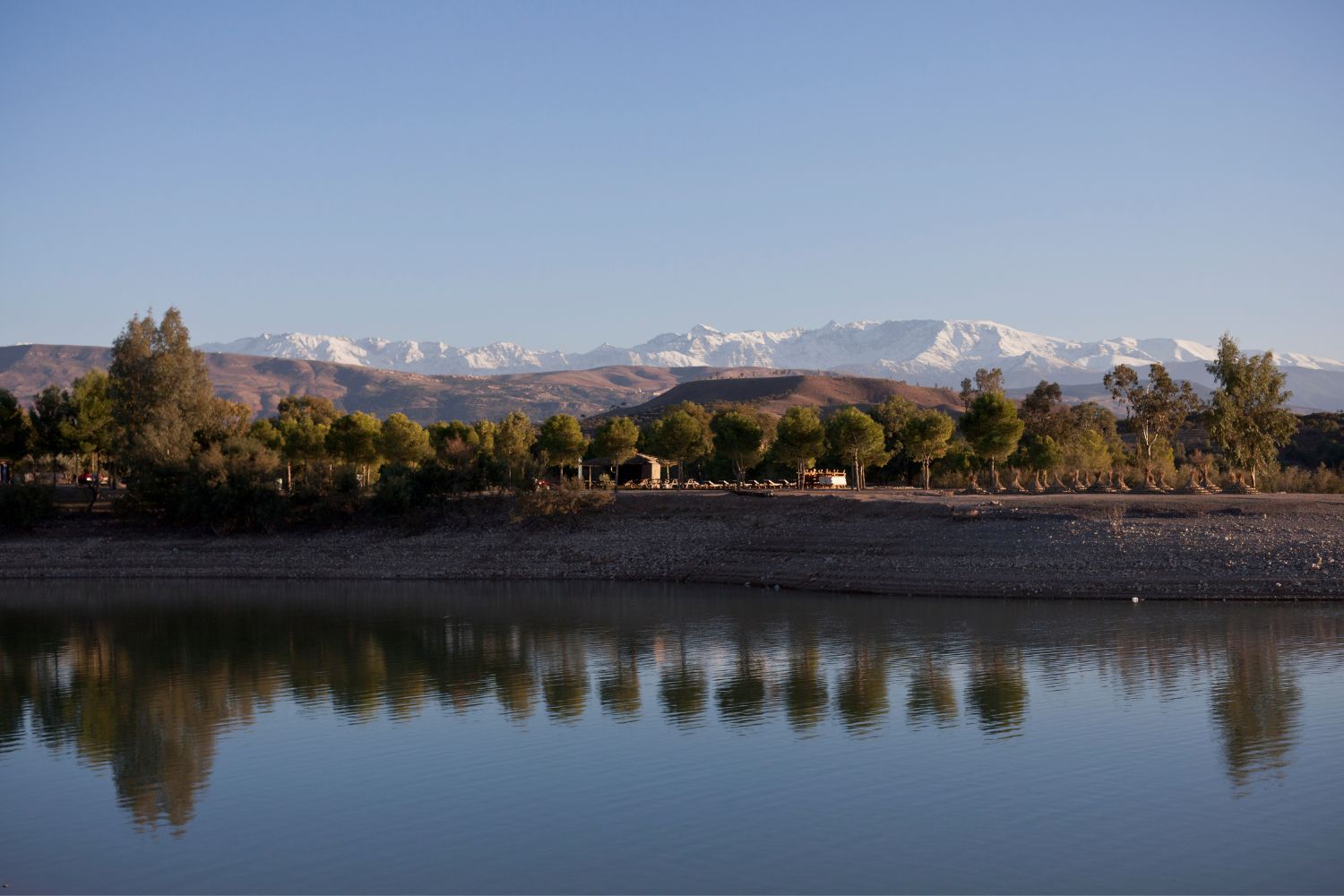
Is a lesser-known gem in Morocco, ideal for travelers looking to experience the tranquility and natural beauty away from the more crowded tourist destinations. Here’s a brief overview:
- Location: Lalla Takerkoust is situated about 40 kilometers southwest of Marrakech. It’s easily accessible by a short drive, making it a perfect day trip or a peaceful overnight stay away from the bustling city.
- The Lake: The focal point of Lalla Takerkoust is its beautiful artificial lake, created as a reservoir to supply water to Marrakech and its surrounding areas. The lake’s serene blue waters set against the backdrop of the Atlas Mountains offer a picturesque setting.
- Activities: Visitors can enjoy a range of activities at Lalla Takerkoust. This includes boating and fishing on the lake, as well as quad biking, horseback riding, and hiking in the surrounding hills. The area is also popular for picnics and strolls along the lakeshore.
- Local Culture: The area around Lalla Takerkoust is inhabited by Berber communities, providing an opportunity to experience the local culture. Visitors can explore traditional Berber villages and possibly interact with the locals to learn about their customs and way of life.
- Accommodation and Dining: There are several accommodation options ranging from luxury hotels to charming guesthouses, many offering stunning views of the lake and mountains. Local restaurants and cafes serve a variety of Moroccan and international cuisines, with many places offering terraces with scenic views.
- Relaxation and Escape: Lalla Takerkoust is especially known for its tranquil environment. It’s a great place to unwind, enjoy the natural beauty, and escape the hustle and bustle of city life.
Lalla Takerkoust offers a refreshing and peaceful experience, combining natural beauty, outdoor activities, and cultural immersion.
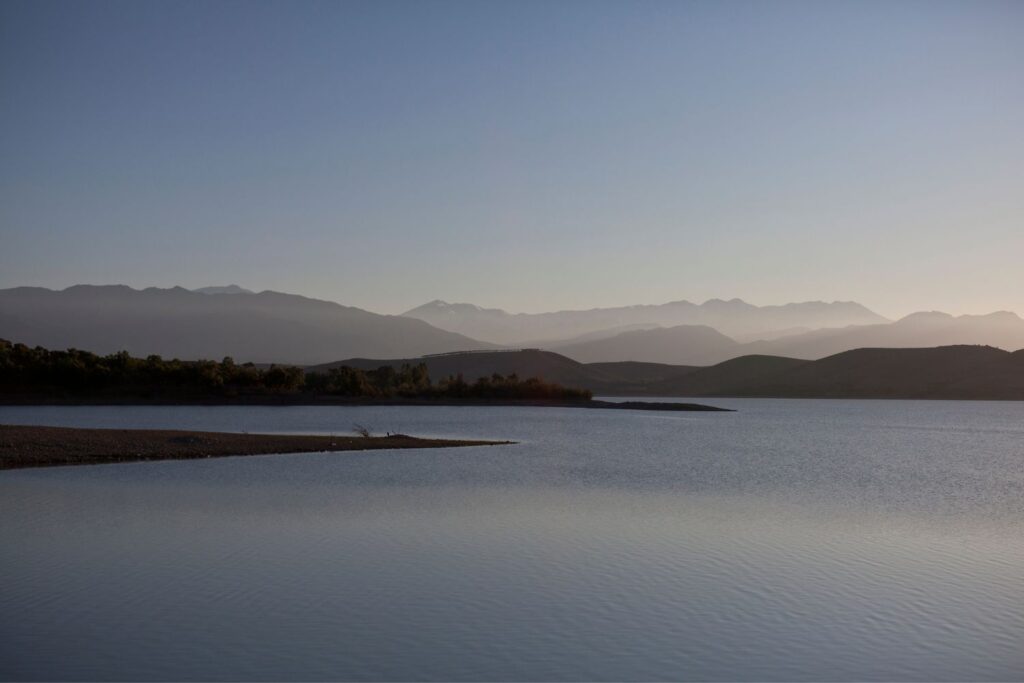
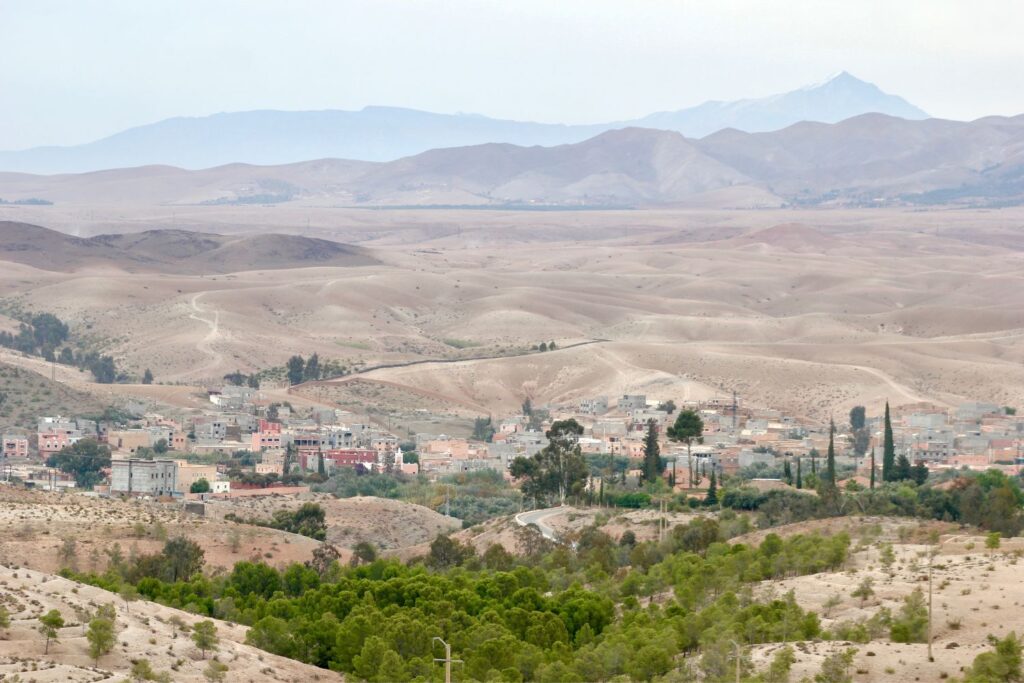
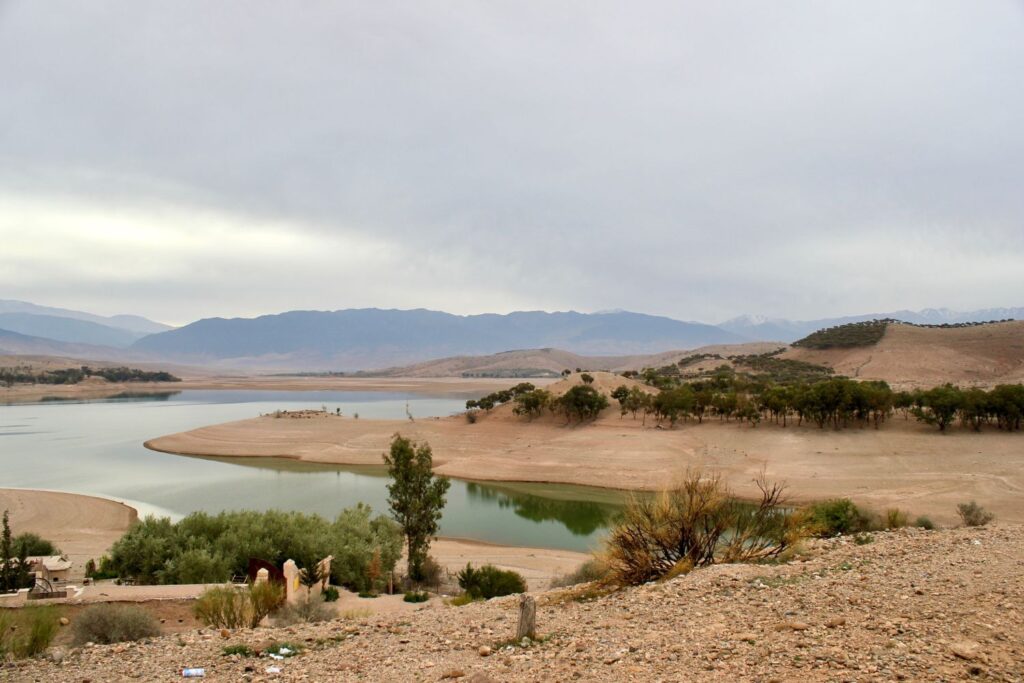
Dadès Gorges
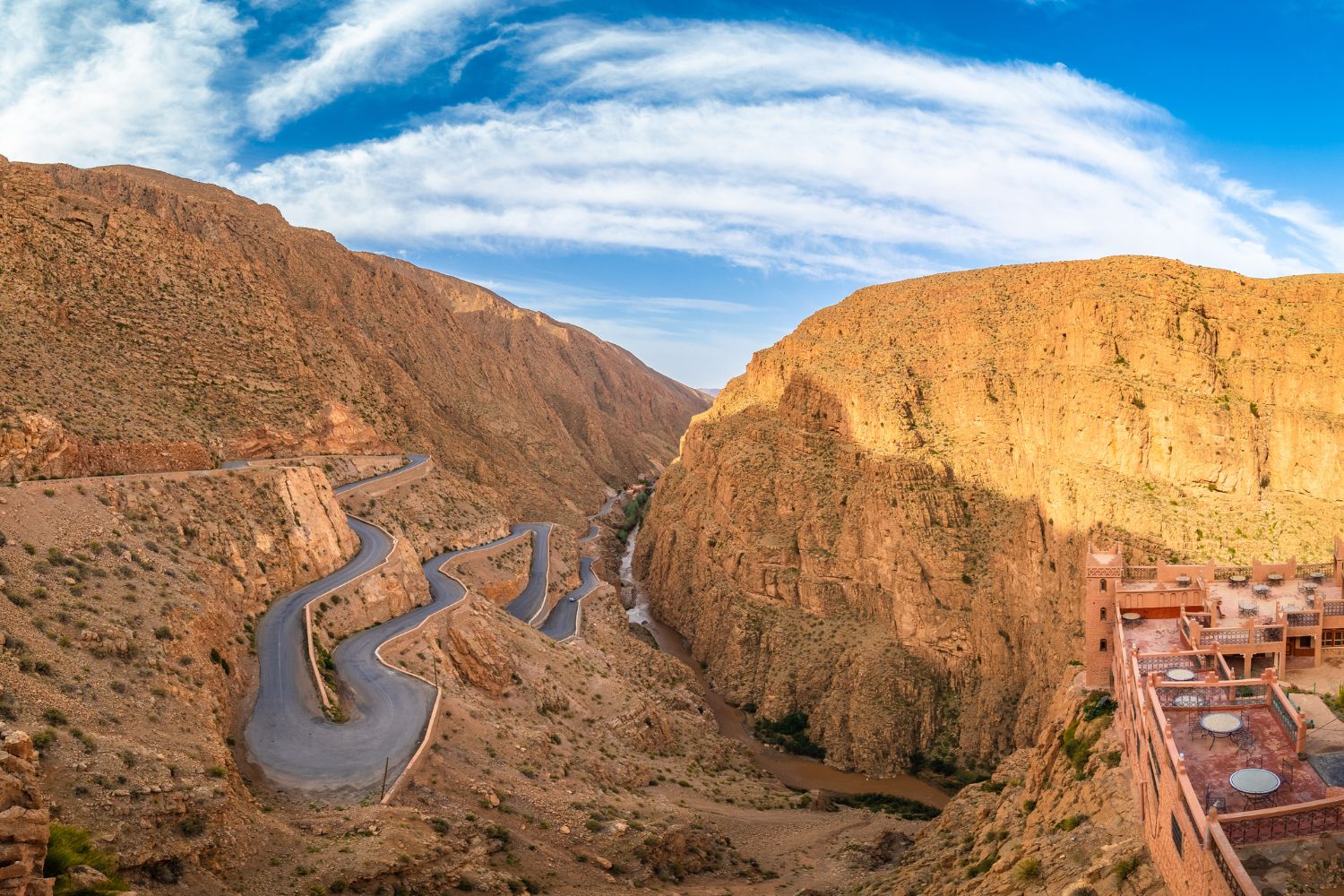
It is an enchanting destination in Morocco, perfect for those who seek adventure and natural beauty in a less frequented setting. Here’s an overview highlighting its unique features:
- Location: The Dadès Gorges are located in the High Atlas Mountains in Morocco. They are part of the Dadès Valley, which stretches from the High Atlas to the Sahara Desert, creating a spectacular corridor of geological wonders.
- Scenic Beauty: The gorges are renowned for their breathtaking landscapes, featuring a series of limestone cliffs carved out by the Dadès River. The dramatic scenery includes towering rock formations, deep valleys, and a palette of reds and browns that change with the sunlight.
- Activities: This area is a haven for outdoor enthusiasts. Hiking is the most popular activity, with trails offering varying degrees of difficulty. Visitors can explore winding paths that lead through local villages and offer stunning views of the surrounding landscape. Photography, bird watching, and exploring the geological formations are other favored activities.
- Local Culture: The Dadès Gorges traverse through several Berber villages, where traditional ways of life are still practiced. Visitors have the opportunity to experience the local culture, meet the friendly locals, and learn about their customs and traditions.
- Accommodation and Dining: Along the gorges, there are various accommodation options, from rustic guesthouses to comfortable hotels, many offering panoramic views of the gorges. Local eateries and guesthouses serve traditional Moroccan dishes, allowing visitors to enjoy authentic culinary experiences.
- Accessibility and Travel Tips: The gorges are accessible by road, with the journey itself offering a scenic drive through the High Atlas Mountains. The best time to visit is during spring or autumn when the weather is mild and the natural scenery is at its most vibrant.
The Dadès Gorges offer a blend of natural splendor, adventure, cultural immersion, and tranquility, making it an ideal destination for travelers looking to explore the road less traveled in Morocco.
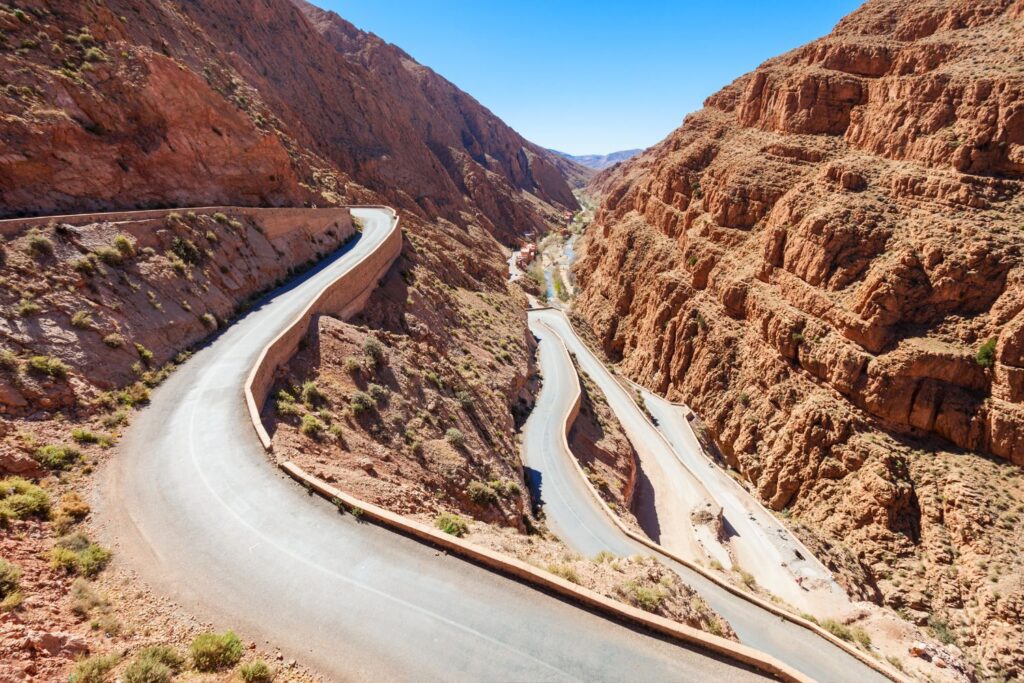
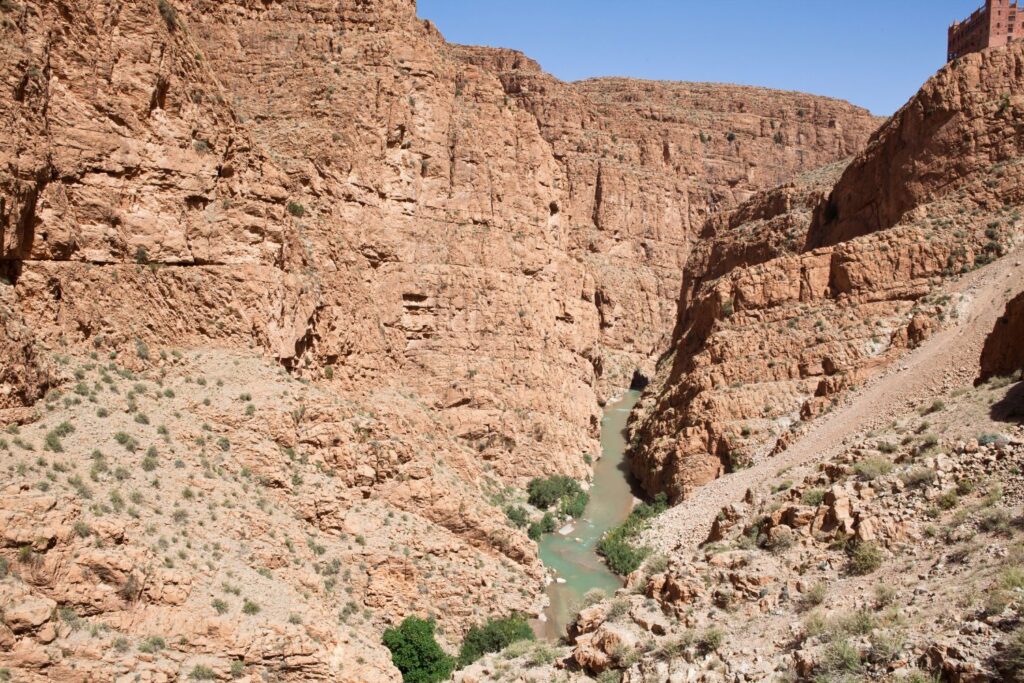
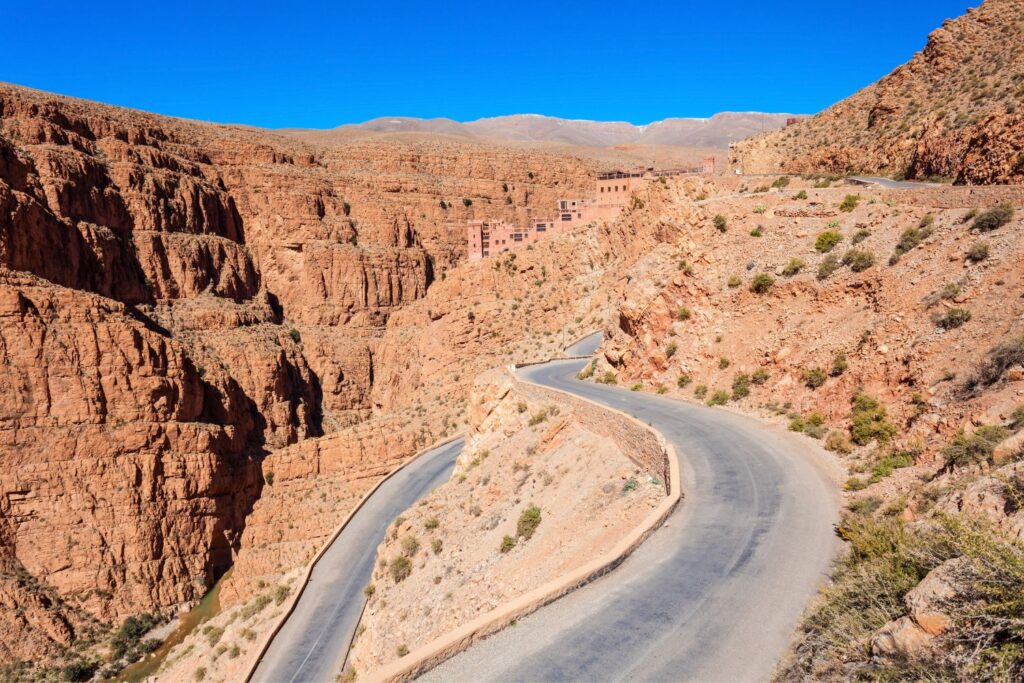
Legzira Beach
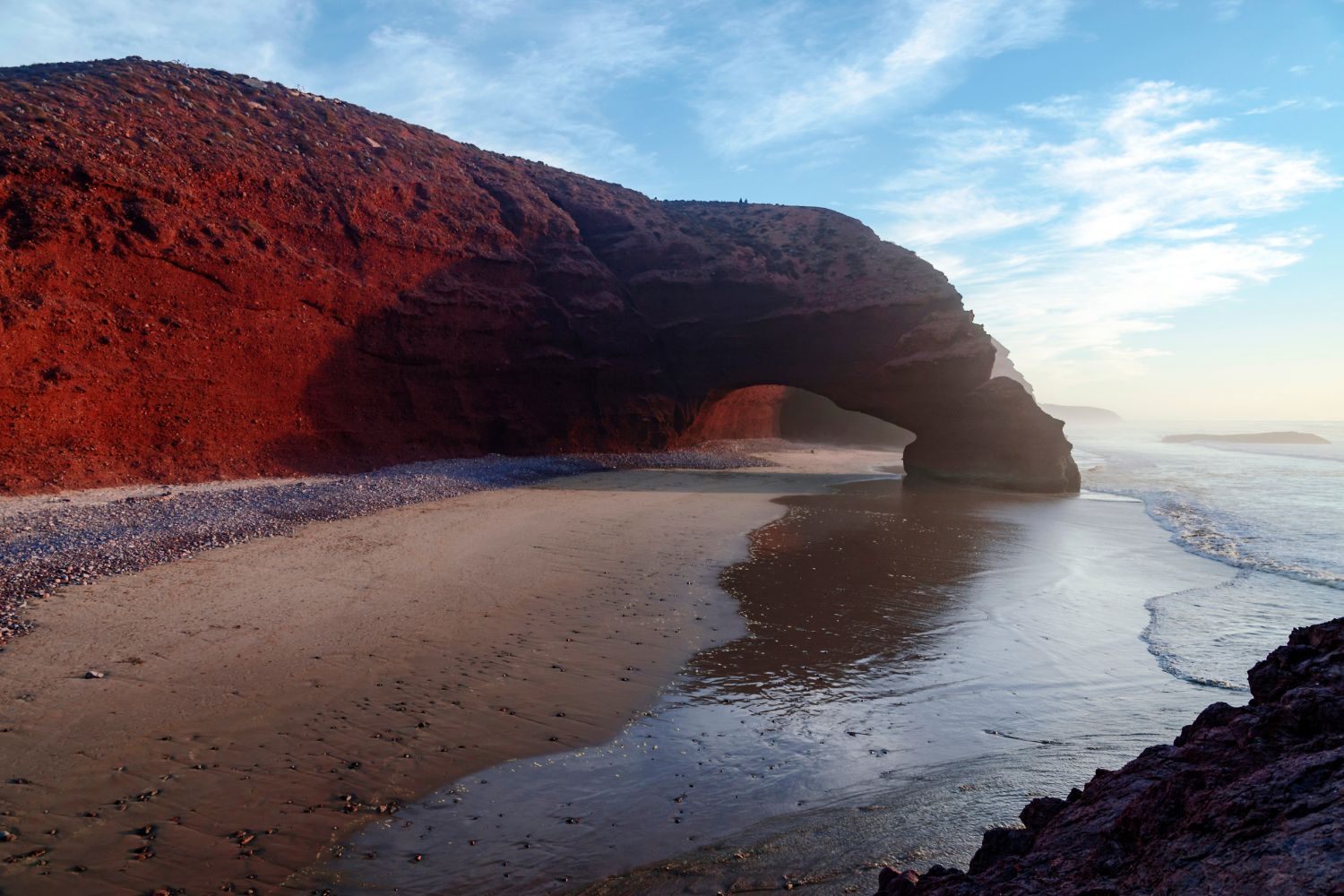
It is a captivating and somewhat off-the-beaten-path destination in Morocco, celebrated for its unique natural landscapes and peaceful ambiance. Here’s a detailed look at what makes Legzira Beach special:
- Location: Legzira Beach is located on the Atlantic coast of Morocco, near the town of Sidi Ifni, about 150 kilometers south of Agadir. It’s a bit remote compared to other tourist beaches, which adds to its untouched charm.
- Natural Features: The beach is most famous for its breathtaking natural rock arches that stretch over the sea. These massive, red stone formations are a result of years of erosion and provide a stunning backdrop, especially at sunset when the colors of the rock are dramatically highlighted.
- Serene Atmosphere: Unlike many of Morocco’s more frequented beaches, Legzira offers a more tranquil environment. Its relatively remote location means fewer crowds, making it a perfect spot for those looking to escape the hustle and bustle.
- Activities: While primarily known for relaxation and scenic beauty, the beach also offers opportunities for long walks along its extensive shore, photography, and birdwatching. The tide pools and cliffs are great for exploring, and the sunsets here are particularly spectacular.
- Local Culture and Cuisine: The small towns and villages surrounding Legzira Beach, like Mirleft and Sidi Ifni, provide a glimpse into the local Berber culture. Visitors can enjoy fresh seafood and traditional Moroccan cuisine at local restaurants and cafes.
- Accessibility and Accommodation: Reaching Legzira Beach involves a drive through some rural areas, offering an authentic view of Moroccan countryside life. Accommodation options in the area range from basic guesthouses to more comfortable hotels, catering to different budgets and preferences.
- Best Time to Visit: The best time to visit Legzira Beach is from late spring to early autumn when the weather is warm and pleasant. However, even in the off-season, its natural beauty and tranquil atmosphere can be thoroughly enjoyed.
Legzira Beach is ideal for those looking for a unique and peaceful beach experience in Morocco, away from the more commercialized coastal areas.
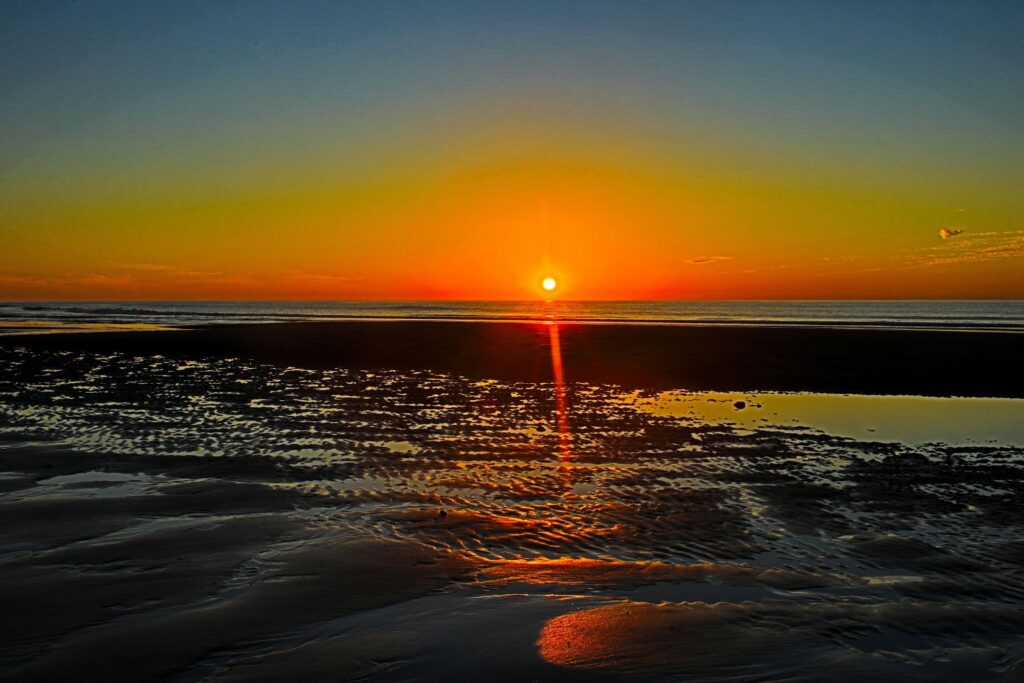
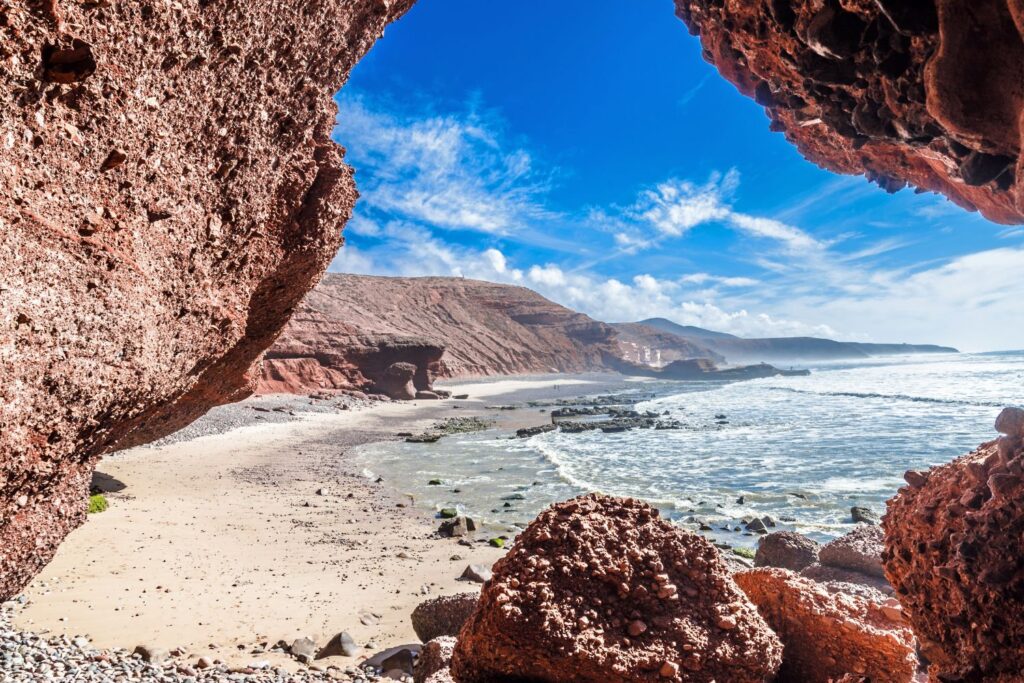
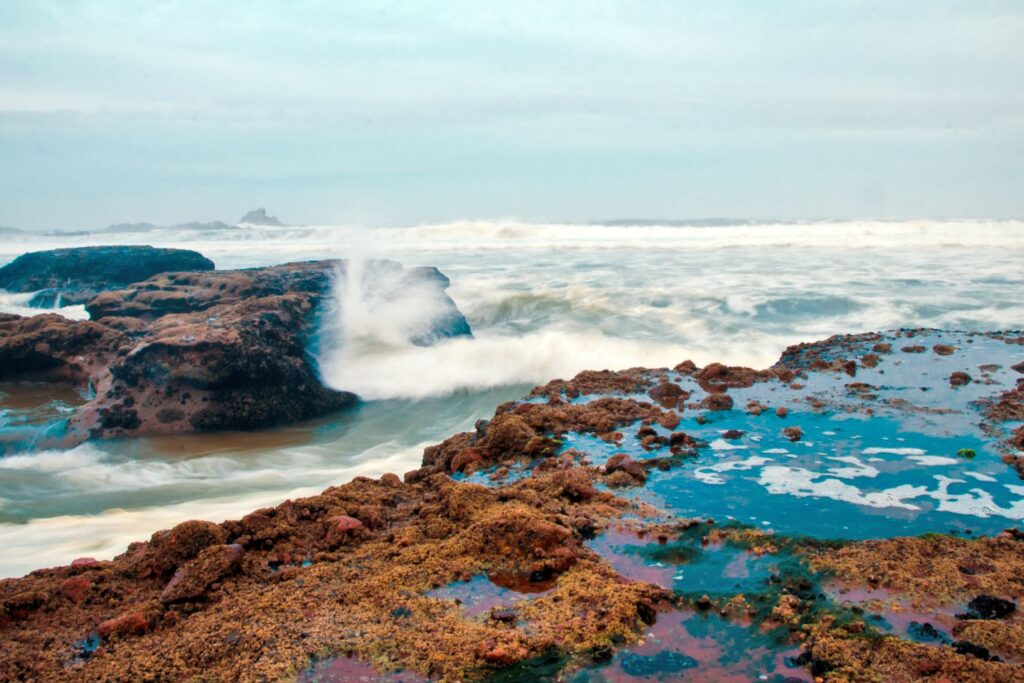
Moulay Idriss Zerhoun
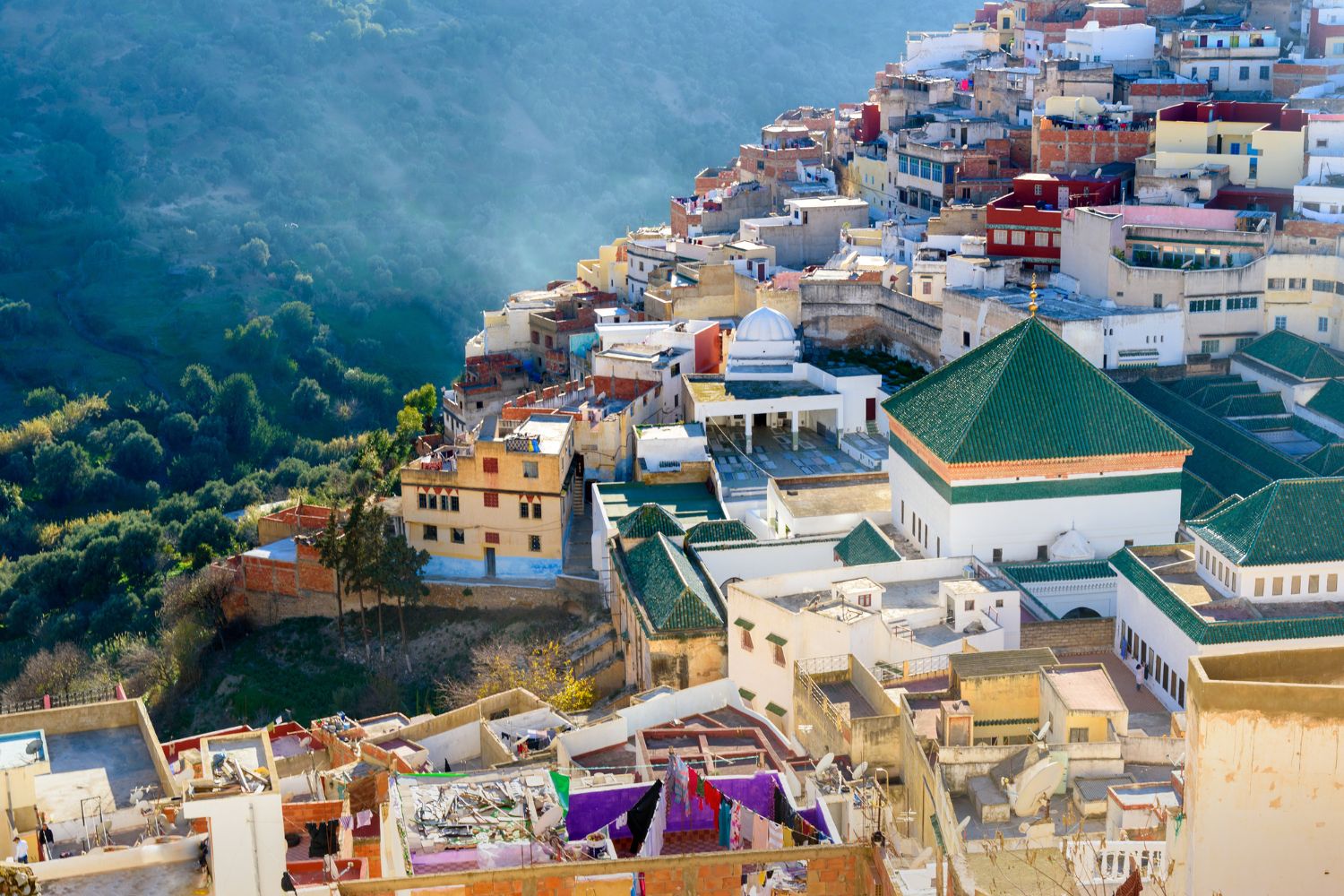
It is a captivating and culturally significant destination in Morocco, often overlooked by mainstream tourism. It offers a unique blend of spiritual heritage and traditional Moroccan life. Here’s an in-depth look at this remarkable town:
- Location: Moulay Idriss Zerhoun is perched atop two hills in the northern part of Morocco, close to the ancient Roman city of Volubilis and about 30 kilometers from Meknes. This location offers stunning panoramic views of the surrounding countryside.
- Historical and Spiritual Significance: The town is named after Moulay Idriss I, the founder of the Idrisid dynasty, who is credited with bringing Islam to Morocco. It is considered one of the country’s most important pilgrimage sites, especially for Moroccan Muslims.
- Architecture and Layout: Moulay Idriss Zerhoun is characterized by its unique and compact urban design, with buildings cascading down the hillsides. The town’s narrow, winding streets and whitewashed houses create a picturesque and almost labyrinthine feel.
- Cultural Experiences: Visitors to Moulay Idriss Zerhoun can immerse themselves in a traditional Moroccan atmosphere. The town’s weekly market is a vibrant affair where one can experience local life and customs. Additionally, there are several small museums and artisan workshops where visitors can learn about the local crafts.
- Local Cuisine: The town is known for its traditional Moroccan food, with local eateries offering dishes like tagines, couscous, and mint tea. Street food vendors also provide an authentic taste of Moroccan snacks and sweets.
- Accommodation: While Moulay Idriss Zerhoun is smaller and less touristy than other Moroccan cities, there are a number of guesthouses and boutique hotels that provide comfortable lodging. Many of these offer roof terraces with magnificent views of the town and the surrounding area.
- Nearby Attractions: The proximity of Moulay Idriss Zerhoun to Volubilis, one of the best-preserved Roman ruins in North Africa, makes it a great base for exploring this UNESCO World Heritage site. The town of Meknes, another key historical city, is also within easy reach.
- Best Time to Visit: The best time to visit is during spring (April to June) or fall (September to October) when the weather is mild and pleasant. The town also hosts various religious and cultural festivals throughout the year, offering a deeper insight into local traditions.
Moulay Idriss Zerhoun is an ideal destination for travelers seeking to explore the spiritual heart of Morocco and experience its rich history and culture in a more intimate and less commercialized setting.
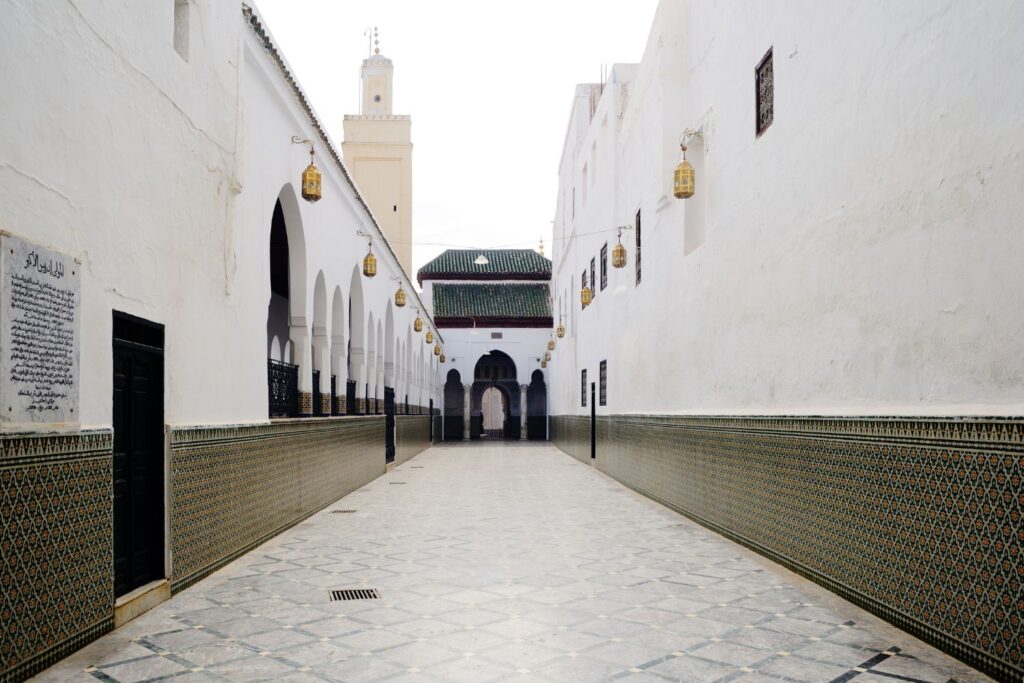
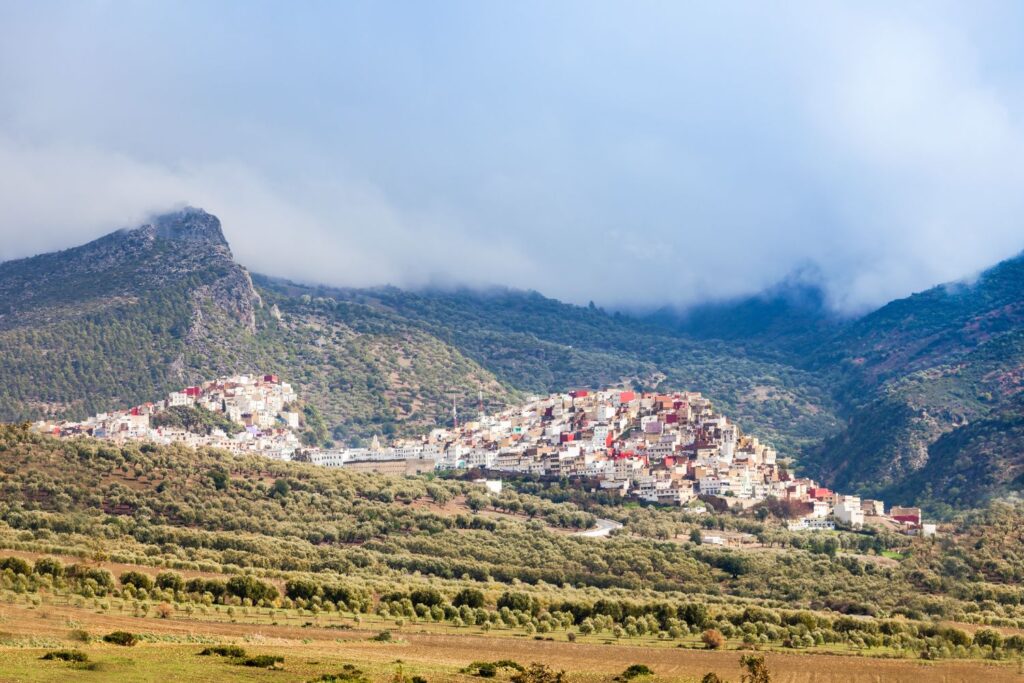
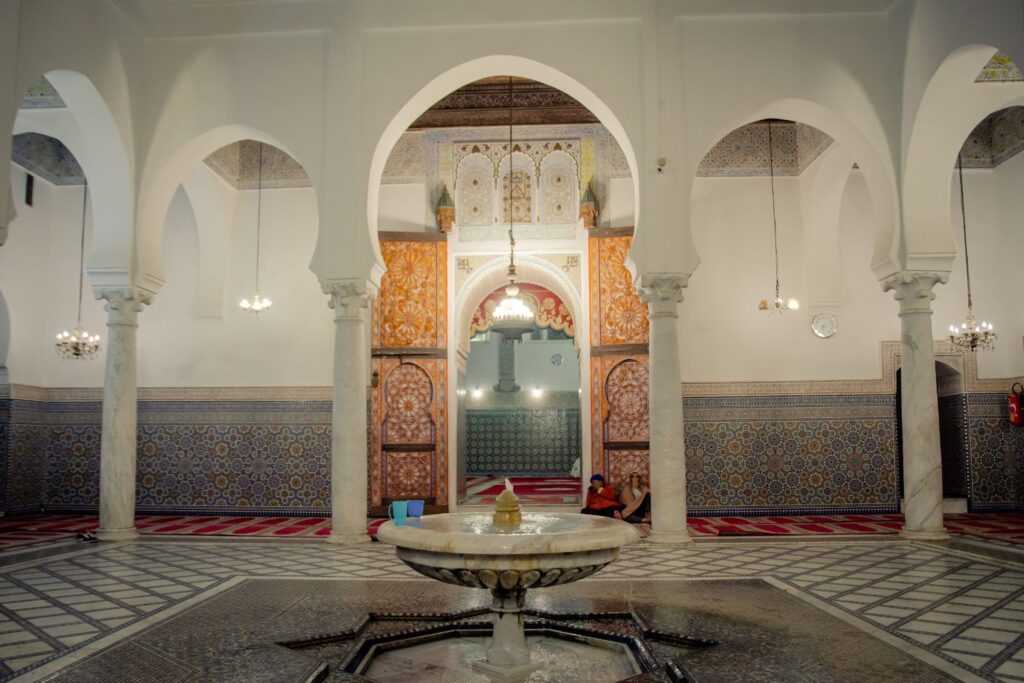
Paradise Valley
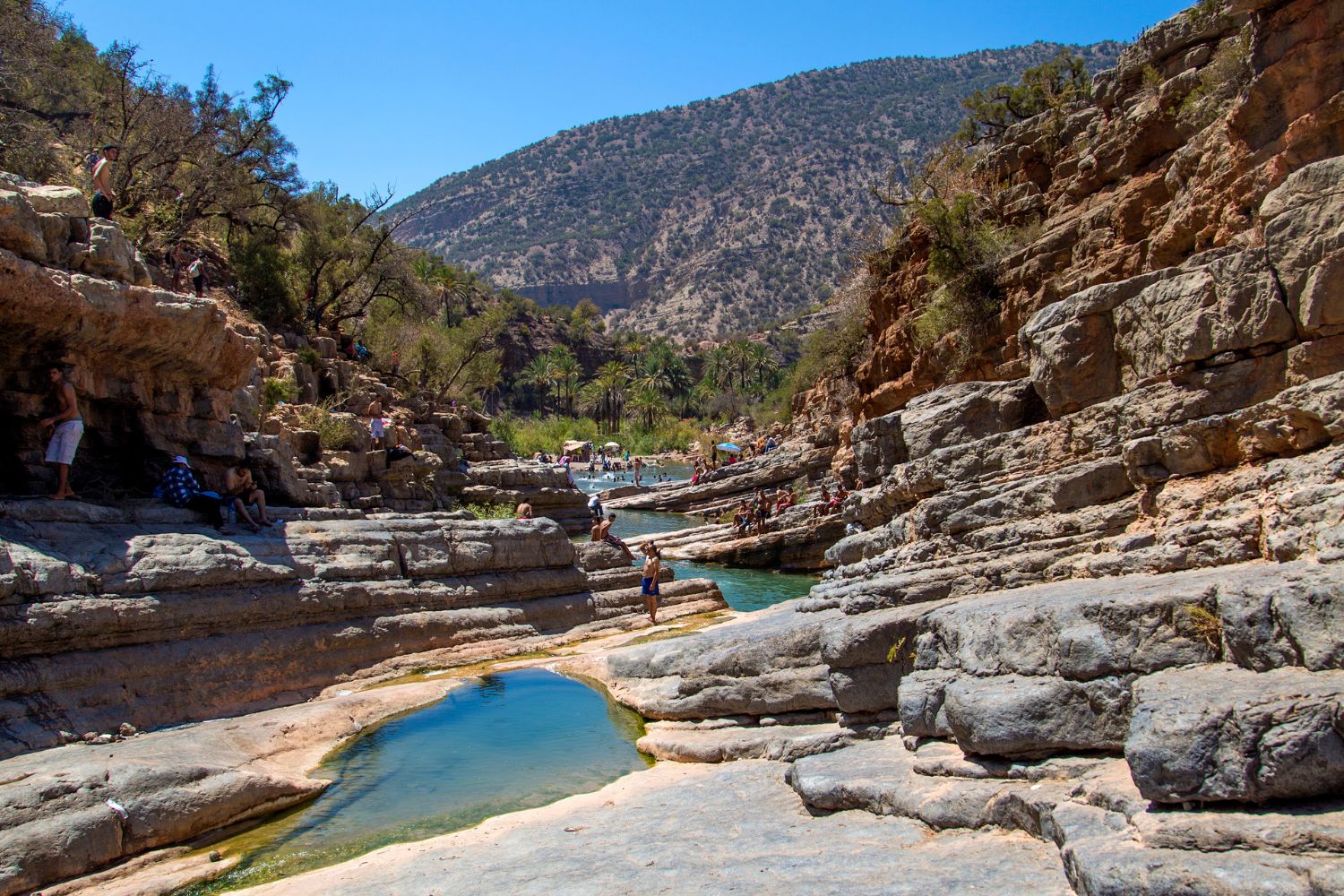
It is a hidden gem in Morocco, offering a stunning natural escape for those looking to venture off the beaten path. Here’s a detailed exploration of this serene destination:
- Location: it is located in the High Atlas Mountains, about an hour’s drive from Agadir and close to the town of Imouzzer. Nestled in a lush valley, it’s a striking contrast to the arid landscapes often associated with Morocco.
- Natural Beauty: The valley is renowned for its picturesque scenery, characterized by crystal-clear swimming holes, cascading waterfalls, and lush palm groves. The greenery and water create a serene and almost surreal landscape in the heart of the mountains.
- Activities: Paradise Valley is a haven for nature lovers and adventure seekers. Activities include hiking along scenic trails, swimming in the natural pools, cliff jumping for the more adventurous, and simply relaxing in the tranquil surroundings. The area is also popular for picnics and leisurely walks.
- Flora and Fauna: The valley’s unique microclimate supports a diverse range of flora and fauna. Visitors might encounter various bird species, as well as the chance to see the indigenous Argan trees, famous for their oil.
- Local Culture: The valley is surrounded by small Berber villages, where traditional Moroccan life continues largely unchanged. Visiting these villages offers a glimpse into the local culture and an opportunity to interact with the friendly residents.
- Accommodation and Dining: There are a few accommodation options in and around Paradise Valley, ranging from camping sites to guesthouses. Dining options are somewhat limited within the valley itself, but local tagines and fresh fruits are often available from small cafes or vendors.
- Accessibility: The road to Paradise Valley winds through the mountains and offers stunning views. It’s accessible by car, and there are also organized tours available from Agadir and nearby towns.
- Best Time to Visit: The best time to visit Paradise Valley is during spring (March to May) when the weather is mild and the valley is at its most lush. However, it’s a beautiful destination year-round, with cooler waters providing a refreshing escape during the hotter summer months.
Its natural beauty and serene atmosphere make it a perfect place for relaxation and outdoor adventure.
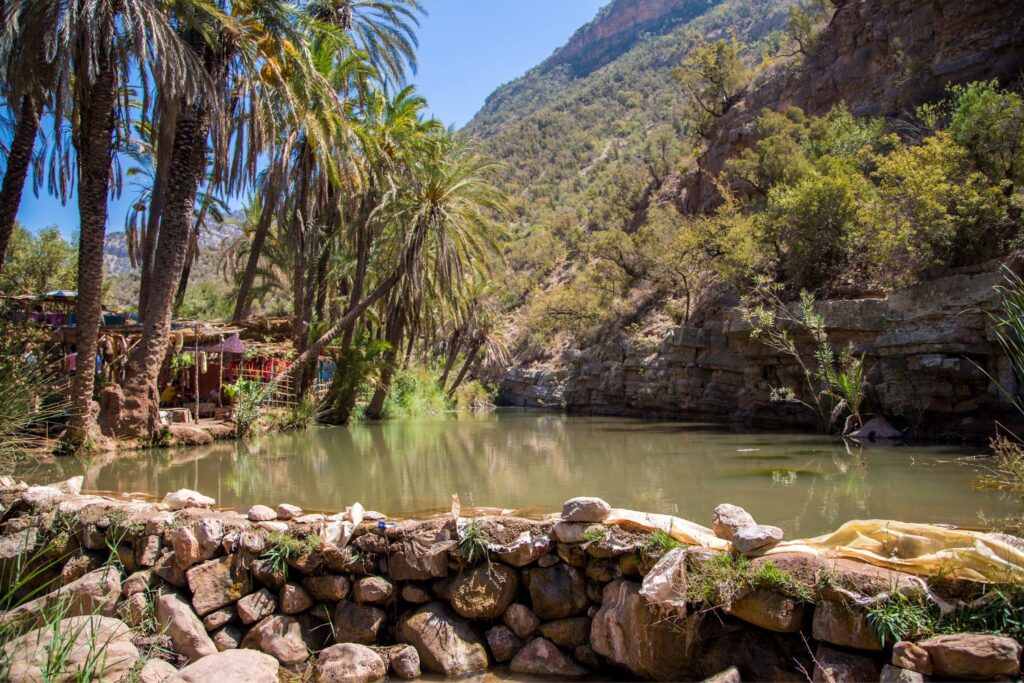
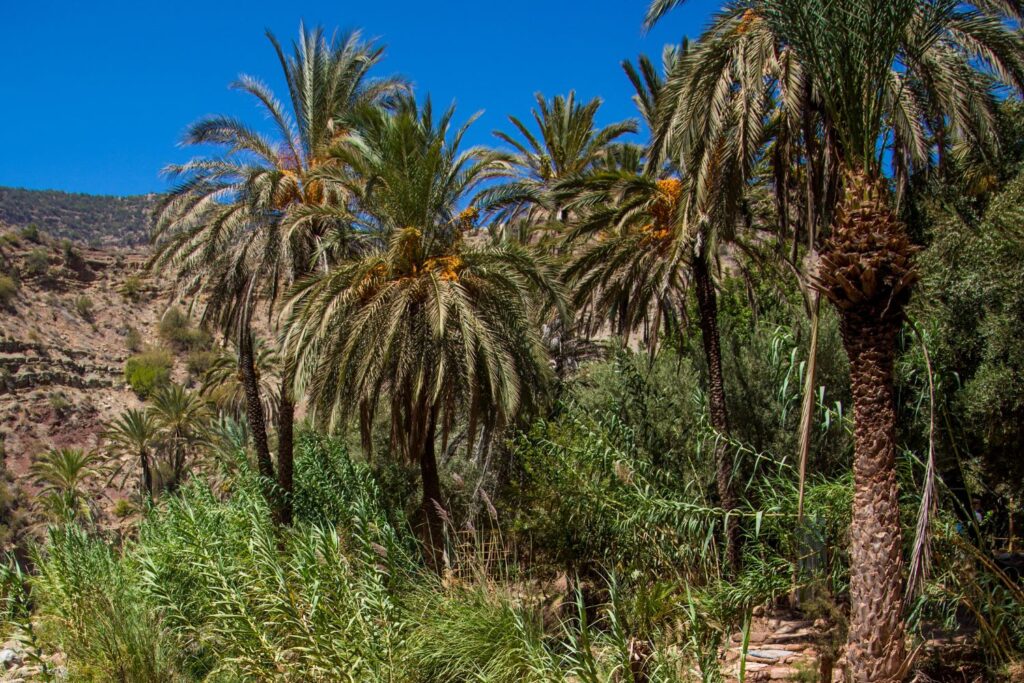
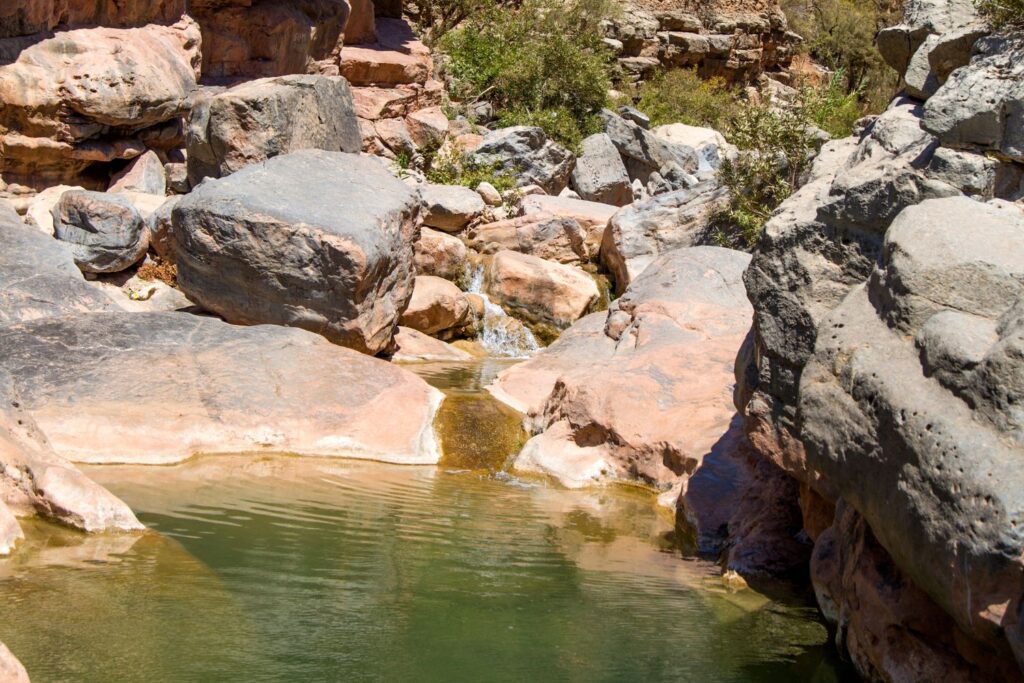
Tinmel Mosque
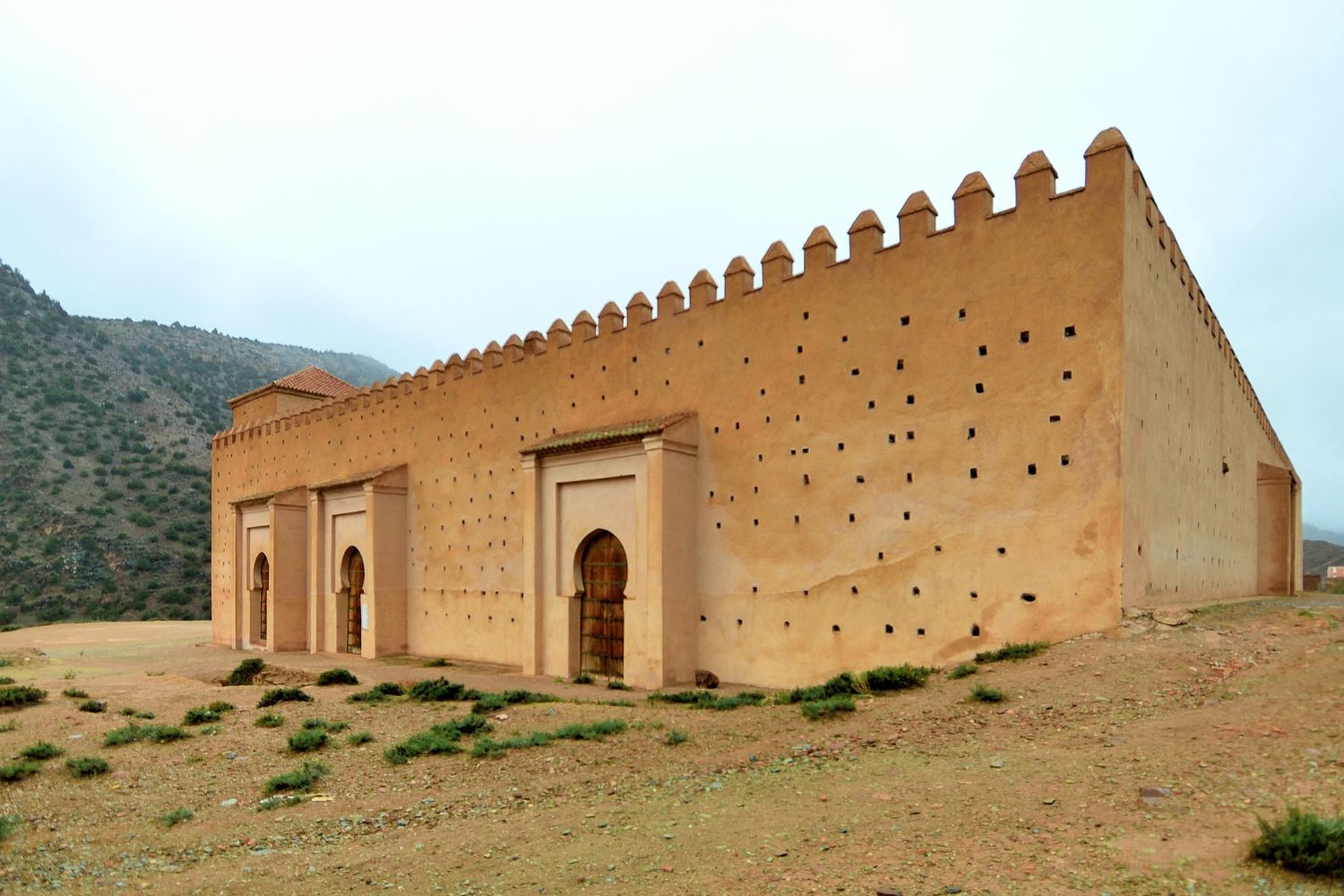
Is located in the High Atlas Mountains of Morocco, and is a significant yet often overlooked historical site. It offers a unique glimpse into the early architectural and religious history of the region. Here’s a detailed look at the Tinmel Mosque:
- Location: The mosque is situated in the small village of Tinmel, approximately 100 kilometers from Marrakech. Nestled in a scenic valley, it’s surrounded by the rugged beauty of the Atlas Mountains.
- Historical Significance: Built in the 12th century, the Tinmel Mosque holds great importance in Moroccan history. It was constructed during the reign of the Almohad dynasty and served as a spiritual and educational center. The mosque is also significant for being one of the two mosques in Morocco open to non-Muslims, the other being the Hassan II Mosque in Casablanca.
- Architecture: The mosque’s architecture is a prime example of Almohad design, characterized by its simplicity and geometric patterns. Although in ruins, the remaining structure, including its intricate arches and the remnants of its minaret, showcases the architectural ingenuity of the time.
- Restoration Efforts: Tinmel Mosque underwent restoration to preserve its historical and cultural significance. These efforts have helped maintain the site for educational and tourism purposes.
- Visiting Experience: Visitors to Tinmel Mosque can explore the serene ruins and get a sense of the spiritual and historical aura that the place still retains. The mosque stands almost as one of the best hidden Gems, offering a peaceful and contemplative experience away from the hustle and bustle of tourist hotspots.
- Cultural Context: The mosque played a crucial role in the spread of Islam in Morocco and remains a symbol of the religious and cultural heritage of the Berber people in the region.
- Accessibility: Reaching Tinmel Mosque involves a scenic drive through the Atlas Mountains. The road, while winding and somewhat rugged, offers breathtaking views and a chance to see the traditional Berber villages along the way.
- Best Time to Visit: The best time to visit is during spring (April to June) or fall (September to November) when the weather is mild. However, the mosque’s location in the mountains means it can be visited year-round, with each season offering a different perspective of the surrounding landscape.
Tinmel Mosque is an ideal destination for those interested in the historical and religious heritage of Morocco. Its remote location and the serene beauty of its ruins provide a profound and enriching experience for visitors.
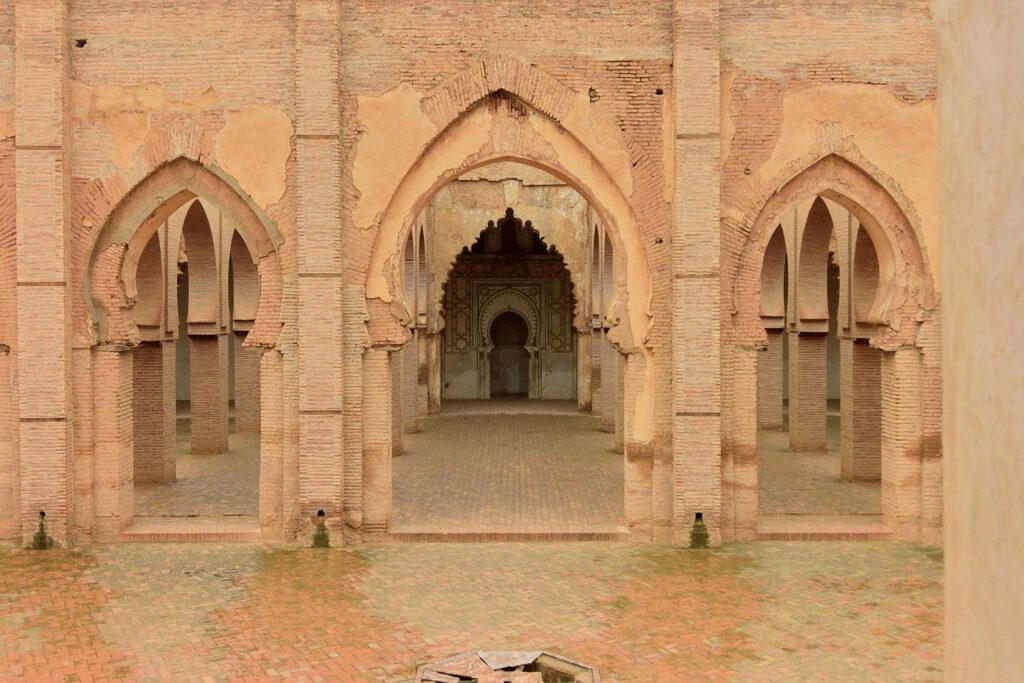
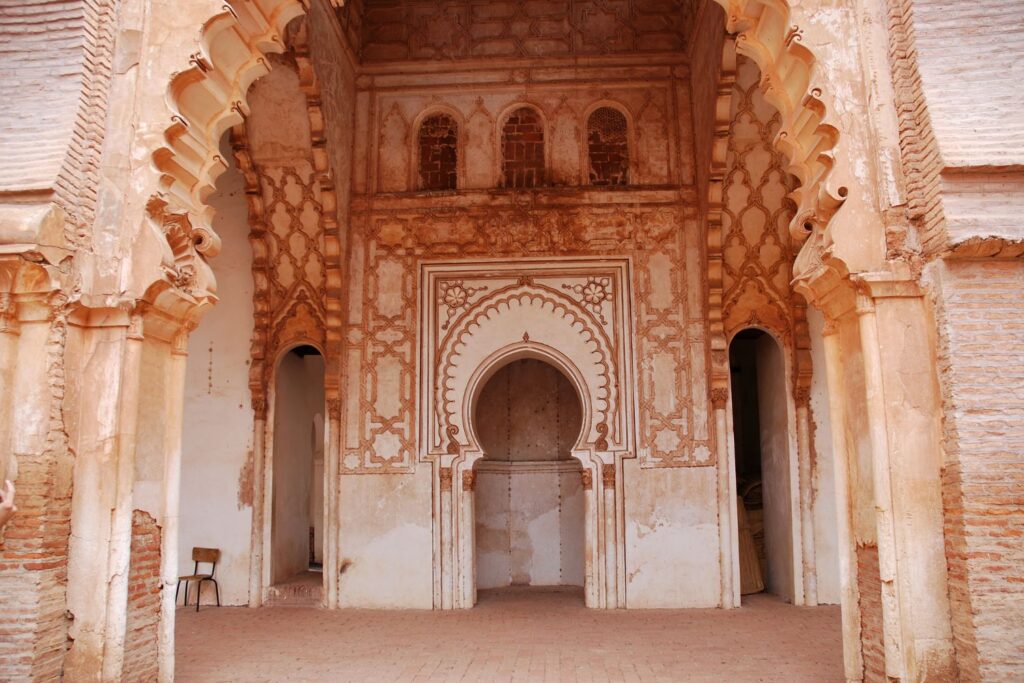
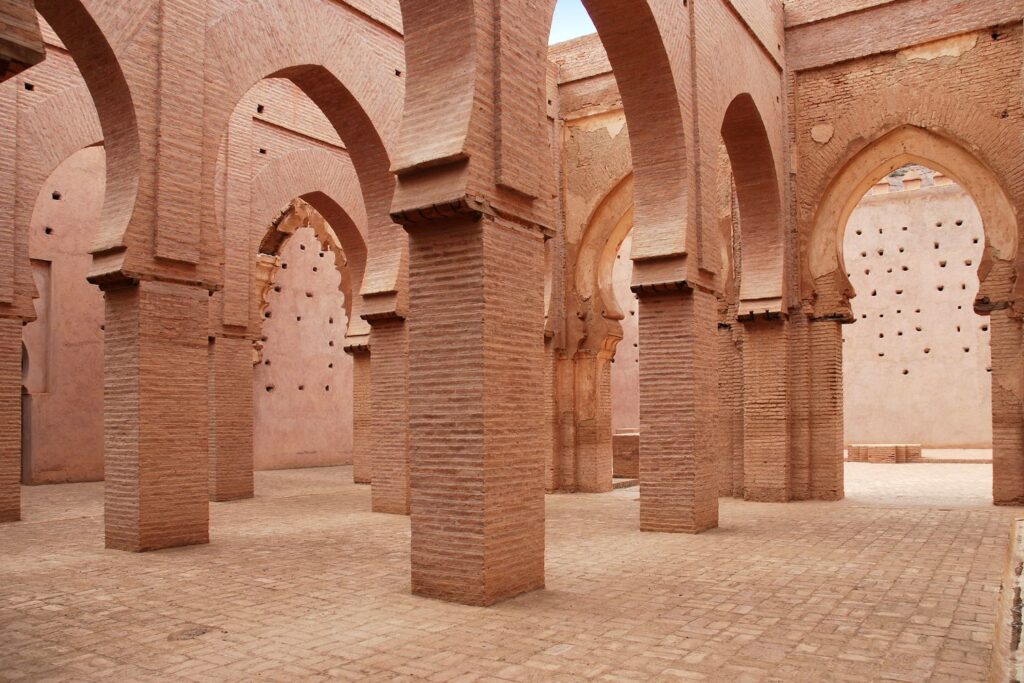
Iminifri Natural Bridge
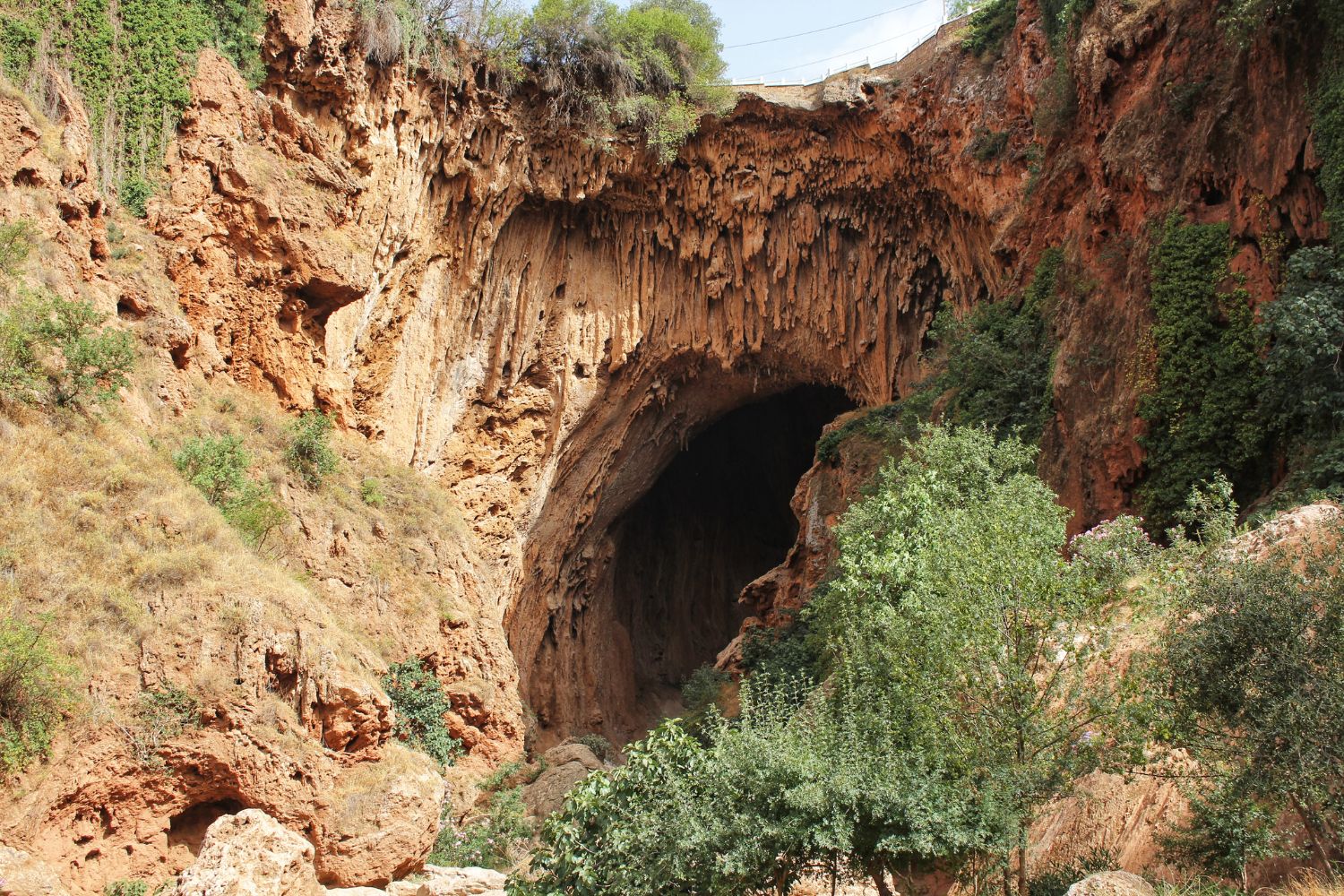
It is a remarkable geological formation in Morocco, offering a unique and off-the-beaten-path experience for travelers. Here’s an in-depth look at this natural wonder:
- Location: Iminifri Natural Bridge is situated near the town of Demnate, about 100 kilometers northeast of Marrakech. This location is in the foothills of the High Atlas Mountains, making it part of a region known for its stunning natural beauty.
- Geological Significance: The natural bridge is a result of centuries of water and wind erosion, creating an impressive arch-like structure over a deep cavern. The bridge itself is composed of limestone and stands as a testament to the natural forces that have shaped the landscape of this area over time.
- Scenic Beauty: The area around the bridge is characterized by its rugged terrain, with the cavern and the surrounding cliffs offering spectacular views. The play of light and shadow within the cavern and the bridge creates a dramatic and photogenic setting, especially during sunrise or sunset.
- Activities: Visitors can explore the cavern beneath the bridge, which offers a unique perspective of this natural structure. Photography is a popular activity here, given the picturesque landscape. Additionally, the surrounding area is suitable for hiking and bird watching.
- Cultural Context: The Iminifri area is also home to several Berber villages, where visitors can experience the local culture and way of life. The bridge and its surroundings provide insights into the geology and natural history significant to the local communities.
- Accessibility and Facilities: The natural bridge is relatively accessible from Demnate and Marrakech. There are walking paths leading to and around the bridge, allowing for easy exploration. Basic facilities such as small cafes and rest areas are available nearby.
- Best Time to Visit: The best time to visit Iminifri Natural Bridge is during spring and autumn when the weather is mild and the natural scenery is at its most vibrant. However, the area can be visited year-round, offering different experiences in each season.
- Sustainability and Preservation: As an increasingly popular natural attraction, there are efforts to preserve the site while making it accessible to visitors. Sustainable tourism practices are encouraged to maintain the beauty and integrity of this unique geological feature.
Iminifri Natural Bridge presents an excellent opportunity for those interested in geology, nature, and photography, as well as anyone looking to explore less crowded but equally fascinating destinations in Morocco.
Tafraoute and the Ameln Valley
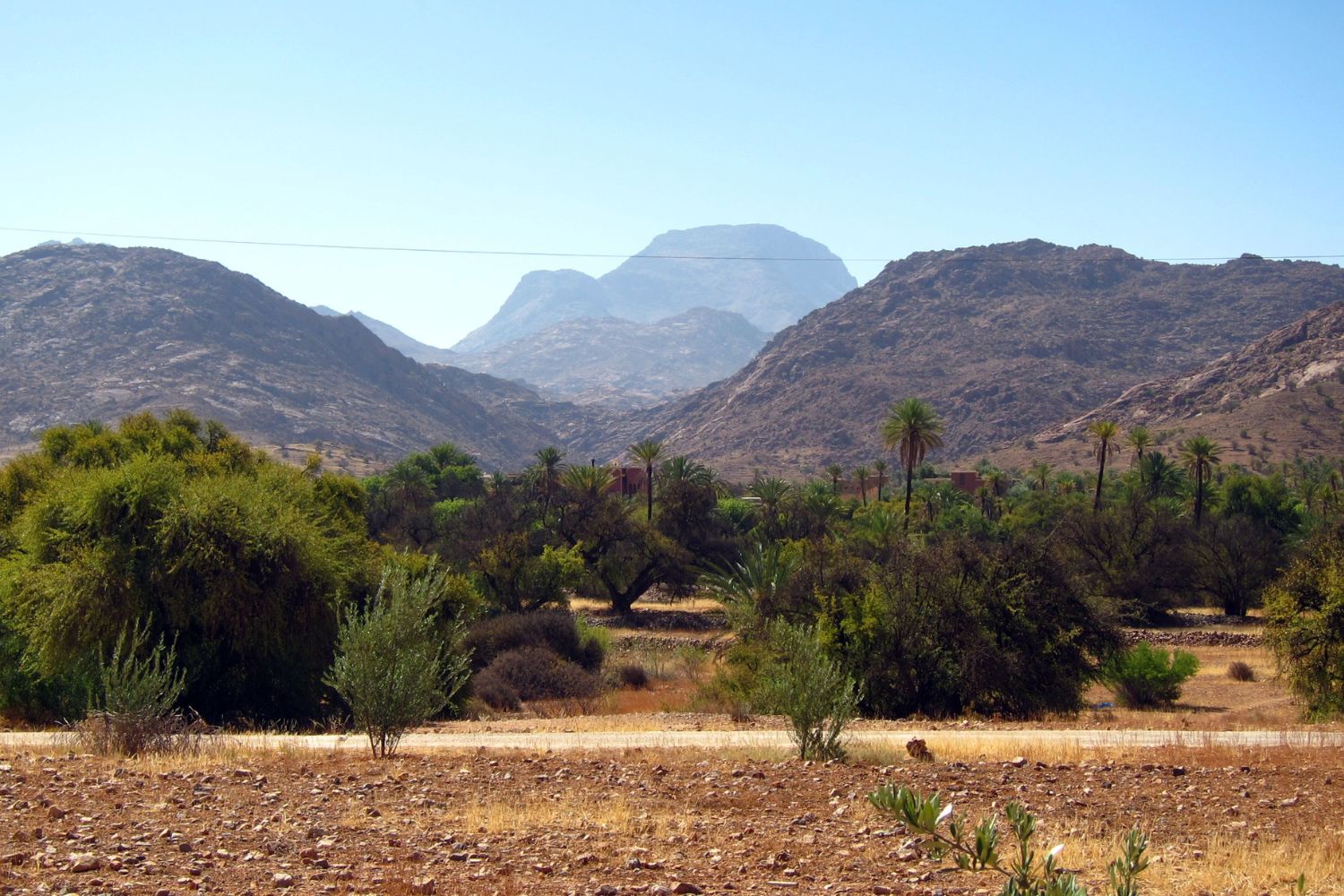
Offer visitors a unique blend of natural beauty, cultural richness, and tranquility. Here’s an in-depth look at what makes this region special:
- Location: Tafraoute is a small town located in the Anti-Atlas Mountains, about 180 kilometers south of Agadir. The Ameln Valley, known for its picturesque landscapes, surrounds the town, creating a stunning backdrop of rugged mountain terrain.
- Scenic Beauty: The area is famous for its dramatic granite rock formations and lush palm groves, which contrast strikingly with the surrounding pink-hued mountains. The natural scenery is especially vibrant during the almond blossom season (usually in February), when the valley is blanketed in white and pink flowers.
- Cultural Experiences: Tafraoute and its surrounding villages are known for their rich Berber heritage. Visitors can explore traditional Berber architecture, experience local customs, and interact with the friendly locals, gaining insight into their way of life.
- Outdoor Activities: The region is a paradise for outdoor enthusiasts. Hiking and trekking in the Ameln Valley offer stunning views and a chance to explore the natural beauty up close. Rock climbing is also popular due to the area’s unique geological formations.
- Local Crafts and Products: Tafraoute is renowned for its handmade leather shoes, known as “Babouche” or “Balgha,” and visitors can often see artisans at work. The region is also known for its argan oil production and almond products, which make for great local souvenirs.
- Accommodation and Dining: There are various accommodation options, from traditional guesthouses to more modern hotels, many of which offer spectacular views of the valley. Local restaurants serve a variety of Moroccan dishes, with an emphasis on fresh, locally sourced ingredients.
- Accessibility: The journey to Tafraoute is a scenic drive through mountain roads, offering breathtaking views and a chance to stop at small villages along the way. The town is more accessible than ever with improved road connections.
- Best Time to Visit: The best time to visit Tafraoute and the Ameln Valley is from October to April when the weather is cooler and more comfortable for outdoor activities. The almond blossom season in February is particularly special.
The region’s natural beauty, combined with its cultural richness and peaceful atmosphere, makes it a must-visit destination for those seeking to explore the less-trodden paths of Morocco.
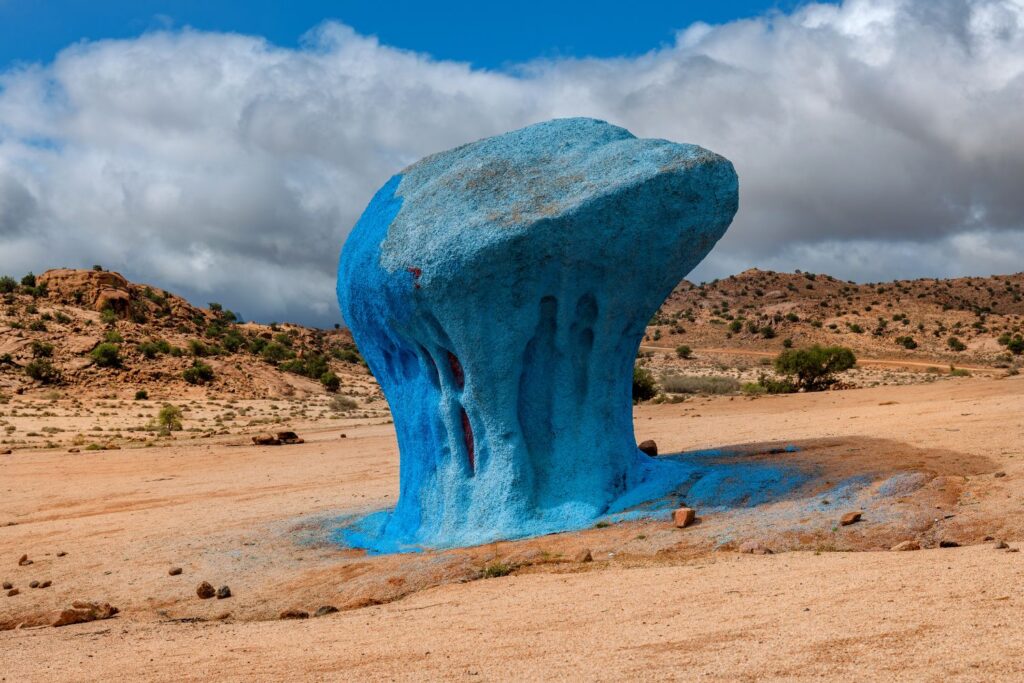
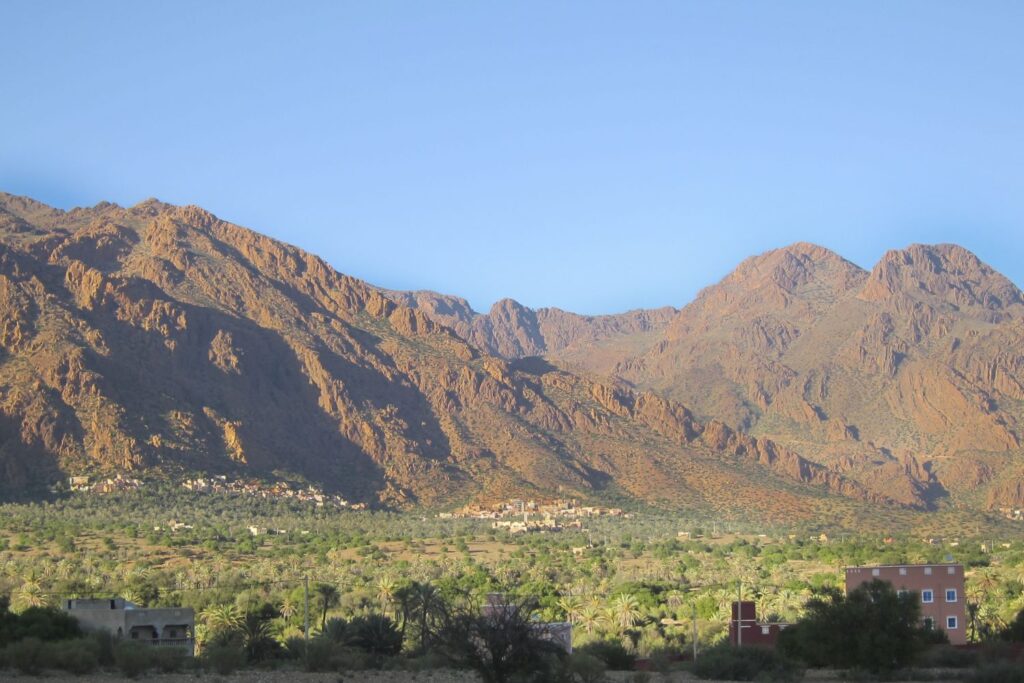
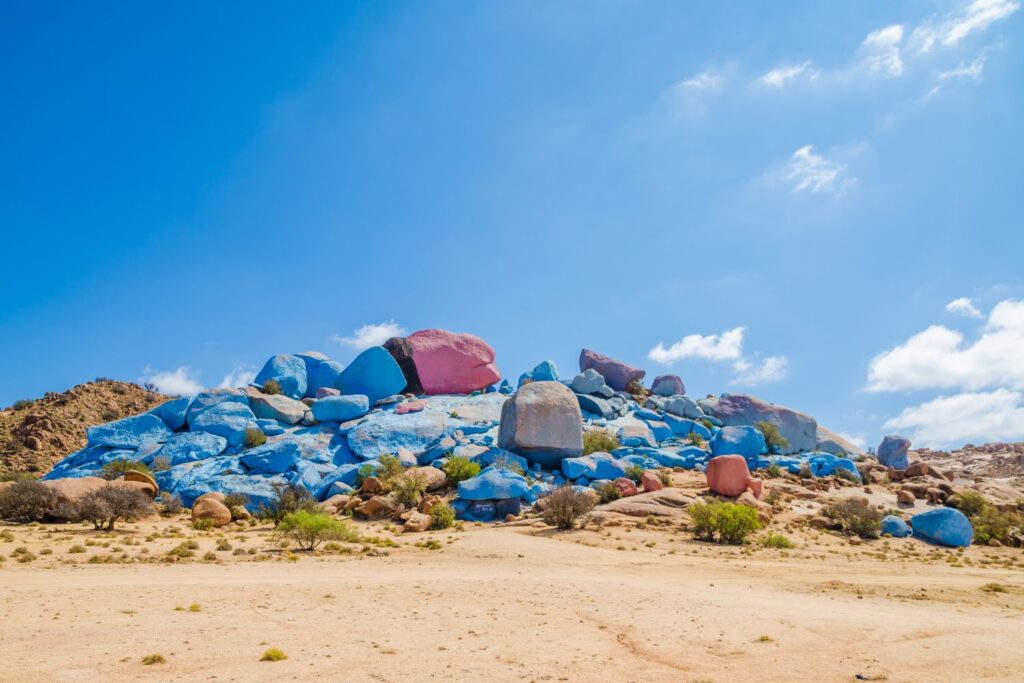
In conclusion, the hidden gems of Morocco offer a tapestry of unforgettable experiences, blending natural wonders, rich cultural heritage, and serene landscapes. From the tranquil waters of Lalla Takerkoust to the dramatic Dadès Gorges, the peaceful shores of Legzira Beach, and the spiritual serenity of Moulay Idriss Zerhoun, each destination presents a unique facet of Morocco’s diverse beauty. Whether it’s through exploring ancient architecture, immersing in local traditions, or simply enjoying the natural splendor, these lesser-known treasures provide a deeper, more intimate journey into the heart of Morocco.